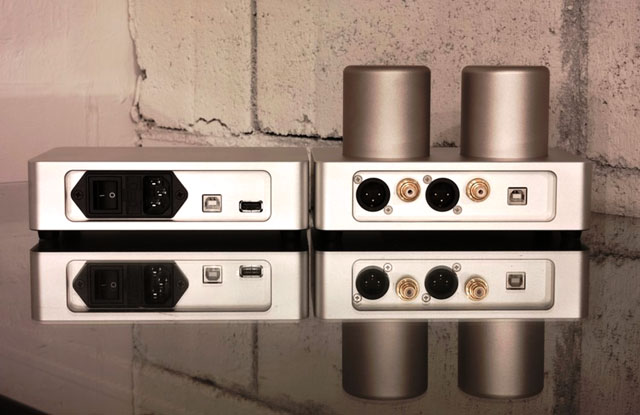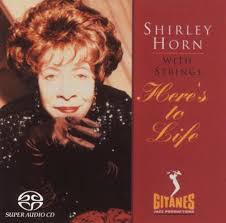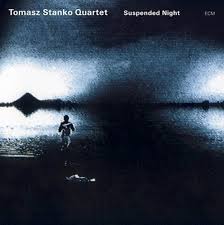Arche Audio Opus 5 USB DAC and Opus 501 Power Supply

 The Arche Audio Opus 5 USB DAC Transformer came my way early this year. Archie Audio is a joint venture of two South Korean audio companies, Hyondae Sound Equipment and Pyon Sound, combining strengths to produce high quality components. The Opus 5 USB DAC uses nickel core output transformers and, with a carefully selected musical sounding digital chipset compiled, not by pouring over technical specs but by extended listening sessions with the components they found of interest. Archie Audio states that they want to create a USB DAC that people can listening to all day, without fatigue. The result is the Opus 5 USB DAC and transformer coupled audio output which, in fact, does produce a very natural and musical sound.
The Arche Audio Opus 5 USB DAC Transformer came my way early this year. Archie Audio is a joint venture of two South Korean audio companies, Hyondae Sound Equipment and Pyon Sound, combining strengths to produce high quality components. The Opus 5 USB DAC uses nickel core output transformers and, with a carefully selected musical sounding digital chipset compiled, not by pouring over technical specs but by extended listening sessions with the components they found of interest. Archie Audio states that they want to create a USB DAC that people can listening to all day, without fatigue. The result is the Opus 5 USB DAC and transformer coupled audio output which, in fact, does produce a very natural and musical sound.
 Archie Audio pursuit for a musical sound for which to develop its products caused them to settle on the Texas Instruments PCM2706 digital chipset. In an attempt to use the highest quality analog output stage, they adopted line output transformers in their Opus 501 external power supply, thus using an internal transformer to separate the digital source from the USB DAC. Its built-in linear power supply feeds a clean voltage to the Opus 5 USB DAC. The transformer prevents the coupling of digital computer noise to the DAC, and your system, thus preventing potential ground loops. Finally, the Opus 501 comes with a high quality 2.5 foot silver USB cable. It’s important to maintain the USB digital signal strength since it’s being fed through a transformer. The Opus 501 can be conveniently used with other USB DACs.
Archie Audio pursuit for a musical sound for which to develop its products caused them to settle on the Texas Instruments PCM2706 digital chipset. In an attempt to use the highest quality analog output stage, they adopted line output transformers in their Opus 501 external power supply, thus using an internal transformer to separate the digital source from the USB DAC. Its built-in linear power supply feeds a clean voltage to the Opus 5 USB DAC. The transformer prevents the coupling of digital computer noise to the DAC, and your system, thus preventing potential ground loops. Finally, the Opus 501 comes with a high quality 2.5 foot silver USB cable. It’s important to maintain the USB digital signal strength since it’s being fed through a transformer. The Opus 501 can be conveniently used with other USB DACs.
Archie Audio believes, in digital application, the benefits of an output transformer design results in a natural and warm sound, with more life-like resolution, and a constant output impedance that maintains the same tonality throughout the frequency range. AA states that, when used in combination, the Opus 5 and Opus 501 remove the maximum amount of digital noise from you system, without ground loop issues, thus restoring a more analog-like sound quality resulting in hours of enjoyable digital music listening.

Using world-class manufacturing techniques, the body of the Opus 5 is milled from a solid billet aluminum block, for rigidity, to maximize performance. The best quality RCA jacks were recently joined by XLR Balanced outputs, giving the Opus 5 easy integration. AA encourages users to try both single ended and balanced – there are definitely differences between the two.
While corresponding with John Park, president of both Arche Audio and Pyon Sound, “The primary goal of designing the Opus 5 system was to create the most analogue-like tonality and transient response from digital music files. When string instrument music such as a violin and a cello is replayed, such characteristics is most apparent. Also, vast and deep analogue-like soundstage is easily presented, when full-scale orchestral music is played.”
For proper replay of high-bit music files, John Parkadvised me to set the output file sampling at 48 kHz and 16 bit (not 24 bit). Again quoting, “the Opus 5 DACT does not attain the music reproduction level which top-class turntable set up would provide. However, it does offer listeners musical satisfaction that mid-entry level turntable set up would provide. (e.g.: musical pleasure and performance level one can get from up to $5~6K turntable setup including a tonearm, a cartridge, and a phono stage).”
How does it sound?
Putting the Arche Audio Opus 5 DAC and 501 transformer through the paces, I enjoyed the sound of this attractive combo. Don’t be fooled by the ‘lower’ sampling rate and bit rate, the sound proved very robust, stable and dimensional at redbook output with CD rips from my MacBook Pro feeding the Opus 5 and 501 connected together by the supplied silver USB cable, out via Oyaide Tunami Terzo RR IC’s to anthem AVM Evolution A 3.2 Integrated amp and out through Oyaide Tunami Nigo V2 speaker cables to my ET LFT-8b’s planar loudspeakers.
I was struck with the depth and breath of the percussion on the stage listening to Miles Davis’ “Miles In The Sky” (Sony 1968), track 2, Paraphernalia. There’s a lot of punch here – bass is solid and well-rooted and imaging of the performers defined and well-articulated. The horns are able-bodied, bold and brawny, their attack intense and assertive. Very musical.
 Davis’ Sivad from “Live-Evil” (Sony 1971) was up next, with surprising bass, power and a real you-are-there-on-that-stage-with-them sensation with tracks both recorded live and in studio. Potent stuff. Why is this album considered somewhat obscure in Miles’ repertoire and did someone slip in and add a sub to my rig? It’s no less than a variant of Bitches Brew, with many of the same players… damn, this crew can play! My wife would hate it! Track 3, Medley: Gemini/Double Image begins with a wonderfully rude guitar-led jam. Pulsing and powerful, this track weaves about at a jam pace, the players milking what it can from every opportunity presented. The instruments are flattened a bit along the front plane of the stage but the dynamics and percussive elements hold together. The Arche Audio Opus 5 and DAC certainly helped hold my interest, rendering a great guitar sound. Farther into the medley, the bass is distorted for effect. Silvad’s live feel is intact but there’s less depth to the stage. This is probably the best Mclaughlin’s played and sounded on a Davis’ recording and, Ha! I had mentioned Jarret’s playing when listening to a track from ‘Bitches Brew’ at a boutique audio space in NYC during the 2016 Audio Show weekend and was corrected that he didn’t play on the album… Wrong! He played both on Brew and Live-Evil.
Davis’ Sivad from “Live-Evil” (Sony 1971) was up next, with surprising bass, power and a real you-are-there-on-that-stage-with-them sensation with tracks both recorded live and in studio. Potent stuff. Why is this album considered somewhat obscure in Miles’ repertoire and did someone slip in and add a sub to my rig? It’s no less than a variant of Bitches Brew, with many of the same players… damn, this crew can play! My wife would hate it! Track 3, Medley: Gemini/Double Image begins with a wonderfully rude guitar-led jam. Pulsing and powerful, this track weaves about at a jam pace, the players milking what it can from every opportunity presented. The instruments are flattened a bit along the front plane of the stage but the dynamics and percussive elements hold together. The Arche Audio Opus 5 and DAC certainly helped hold my interest, rendering a great guitar sound. Farther into the medley, the bass is distorted for effect. Silvad’s live feel is intact but there’s less depth to the stage. This is probably the best Mclaughlin’s played and sounded on a Davis’ recording and, Ha! I had mentioned Jarret’s playing when listening to a track from ‘Bitches Brew’ at a boutique audio space in NYC during the 2016 Audio Show weekend and was corrected that he didn’t play on the album… Wrong! He played both on Brew and Live-Evil.
Switching gears, I put on Bill Evans and Jim Hall’s “Undercurrents” (United Artists 1962) next. Evans’ and Hall are oh, so listenable here, delivering My Funny Valentine at a calmer but equally exhilarating pace. I could swear there are more players present. The instruments textures are warm and lovely and the Opus 5 and 501 combo delivers this intimate event beautifully. Dream Gypsy is wonderfully syncopated and rhythmic for having just two performers present. The stage is somewhat shallow, not unusual with just two players, but these two giants are having a wonderful time and it shows.
 Shirley Horn’s version of Here’s To Life from “Shirley Horn with Strings: Here’s To Life” (Verve 1992) sounds great at the rebook rate. Lush, sweet and romantic, this track exudes with Horn’s lifetime of musicality and jwa de vive, with a decisive pull at the heartstrings. The Opus 5 and 501 again do their magic, conveying this wonderful artist in a warm and delicate way.
Shirley Horn’s version of Here’s To Life from “Shirley Horn with Strings: Here’s To Life” (Verve 1992) sounds great at the rebook rate. Lush, sweet and romantic, this track exudes with Horn’s lifetime of musicality and jwa de vive, with a decisive pull at the heartstrings. The Opus 5 and 501 again do their magic, conveying this wonderful artist in a warm and delicate way.
Tomasz Stanko’s “Suspended Night” (ECM 2004), played in 24/96 download form (acoustic sounds superhirez) through Amarra HiFi and downsampled as John Park recommended, is another laid back, late night listening pleasure.

Lush and unrushed, this recording offers very nice cymbals and percussion sounds, soft, along with Stanko’s resonant and seductive trumpet and flugelhorn tone. The percussion work is playful and well-balanced, with a nice variety of sounds and, while the stage isn’t very deep, what is presented is very musical in a pleasant, somewhat British way. Nothing strident or brittle, the music commanding your attention without demanding your attention, if you get my drift. Solid instrument tones and textures and even what could be the brittlest trumpet note has roundness.
Pat Metheny’s Unity Band’s “Kin ()” (Nonesuch 2014) acquired from HDtracks.com as a 24/96 download over the holiday (at a great discount) also came with 3 HDtracks samplers – now that was a surprise! It’s nice to hear a sax in the Metheny mix again, adding some texture to the work. The stage is up front and well imaged, with good full bass and percussion up front. It’s not the deepest stage, but this tight band delivers a full sound that’s rich, rounded and not at all sparkly or hard-edged… be it cymbals or horns, is presented by the Opus 5 and 501 in a non-fatiguing way. Both bass and dynamics are “there” as are smaller nuanced cues, with a sound that’s quite pleasing.
The Wrap
The Arche Audio Opus 5 USB DAC and Opus 501 transformer deliver digital music in a pleasing form. The design and build quality here is top notch. I did wish there was an optical input with which to use other higher res sources, but what this USB DAC lacks in bit depth and bam boom sizzle, it delivers in musicality with a warm, rather analog sound. This laid back, somewhat British signature will lend itself to long listening sessions to come.
John also shared that that Archie Audio also has a high performance turntable model now undergoing the major design upgrade. Stay tuned for that.


greg voth
Specifications:
Opus 5 USB DAC
1. Chip set: Texas Instruments PCM2706
2. Sampling rate: up to 48 KHz
3. Clock rate: on-chip clock generator with single 12MHz clock source
4. Digital-Analogue conversion type: 16 bit Delta Sigma stereo DAC
5. Outputs: SE and true balanced types (RCA and XLR connectors)
6. Output Transformer type: nickel-core EI-type, custom wound in house
7. No oversampling is employed
8. Input: one USB without software installation.
9. Output voltage: 3 V
10. Accepted music format: up to 16-bit and 48KHz music files
Price: $2,100
Dimension: W8″ x D5″ x H6″
Weight: 9 lbs
Opus 501 Detached Power Supply
Available separately.
Price (comes with 2.5 ft silver USB cable): $900
Dimension: W8″ x D5″ x H3″
Weight: 4 lbs
US Importer Mocking Bird Distribution:
Website: www.mockingbirddistribution.com
Phone: 214-668-2509
Stereo Times Masthead
Publisher/Founder
Clement Perry
Editor
Dave Thomas
Senior Editors
Frank Alles, Mike Girardi, Russell Lichter, Terry London, Moreno Mitchell, Paul Szabady, Bill Wells, Mike Wright, and Stephen Yan,
Current Contributors
David Abramson, Tim Barrall, Dave Allison, Ron Cook, Lewis Dardick, John Hoffman, Dan Secula, Don Shaulis, Greg Simmons, Eric Teh, Greg Voth, Richard Willie, Ed Van Winkle, Rob Dockery, Richard Doron, and Daveed Turek
Site Management Clement Perry
Ad Designer: Martin Perry






Be the first to comment on: Arche Audio Opus 5 USB DAC and Opus 501 Power Supply